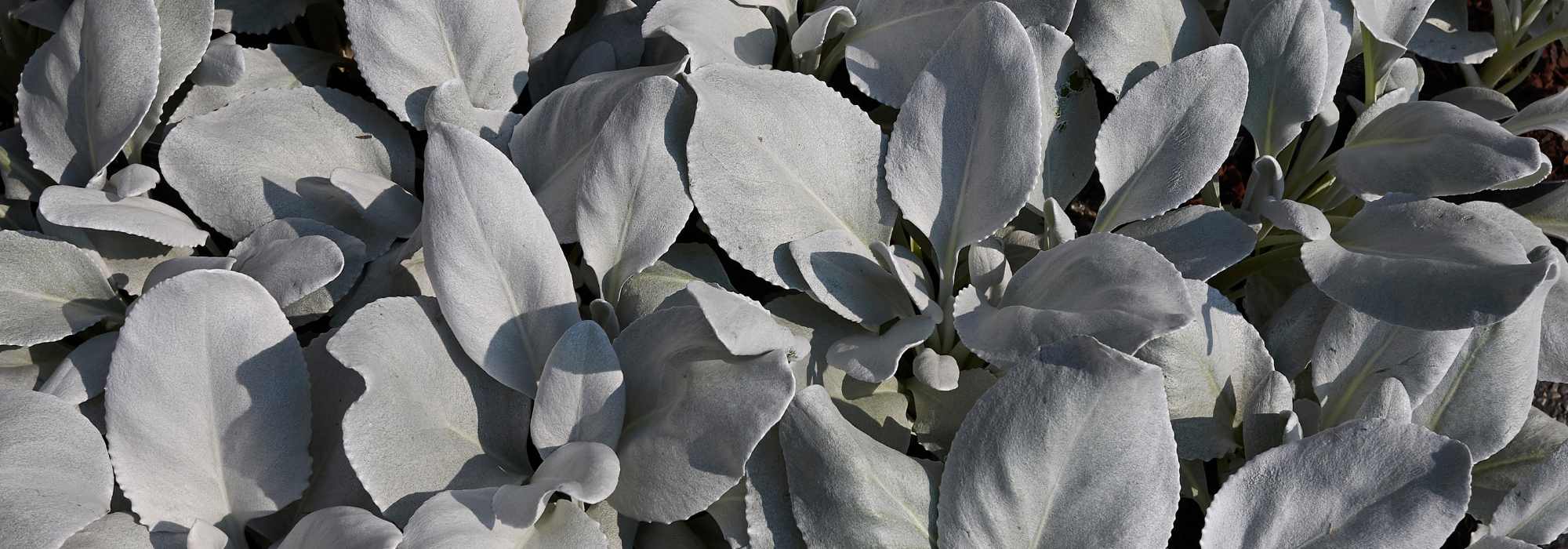
Senecio: planting and care
Contents
Senecio in a few words
- Depending on the species, it forms a silvery or blue bush
- It loves the sun, tolerates drought and sea spray well
- Relatively frost-sensitive, it is an excellent plant for coastal, Atlantic, or Mediterranean gardens
- Undemanding, it thrives in full sun in very well-draining soil
- It brightens up rockeries, slopes, and dry gardens
The word from our expert
The Senecio belongs to a highly diverse genus that includes perennial plants, succulents, and shrubs. From the Dusty Miller (Cineraria maritima) with its finely cut, velvety grey leaf, once commonly used for cemetery plantings… to the remarkable Senecio mandraliscae, notable for its blue, claw-shaped leaves, and including the Senecio serpens ‘Blue Chalk’ with its long succulent stems or the astonishing Senecio rowleyanus, whose spherical leaves cascade elegantly, the Senecio is cherished for its evergreen and decorative leaf. As a bonus, it is crowned with summer flowering in yellow, pink, or cream heads. Its habit can be upright or spreading, offering a wide range of uses. Low-maintenance, it tolerates drought and sea spray, thriving even in the garden’s harshest spots. Relatively frost-sensitive, it is best planted outdoors in Mediterranean or Atlantic coastal regions. It prefers pot cultivation in areas where temperatures frequently drop below -8°C.
Discover the Senecio to add colour to your garden or balcony and create stunning contrasts of textures and colours!
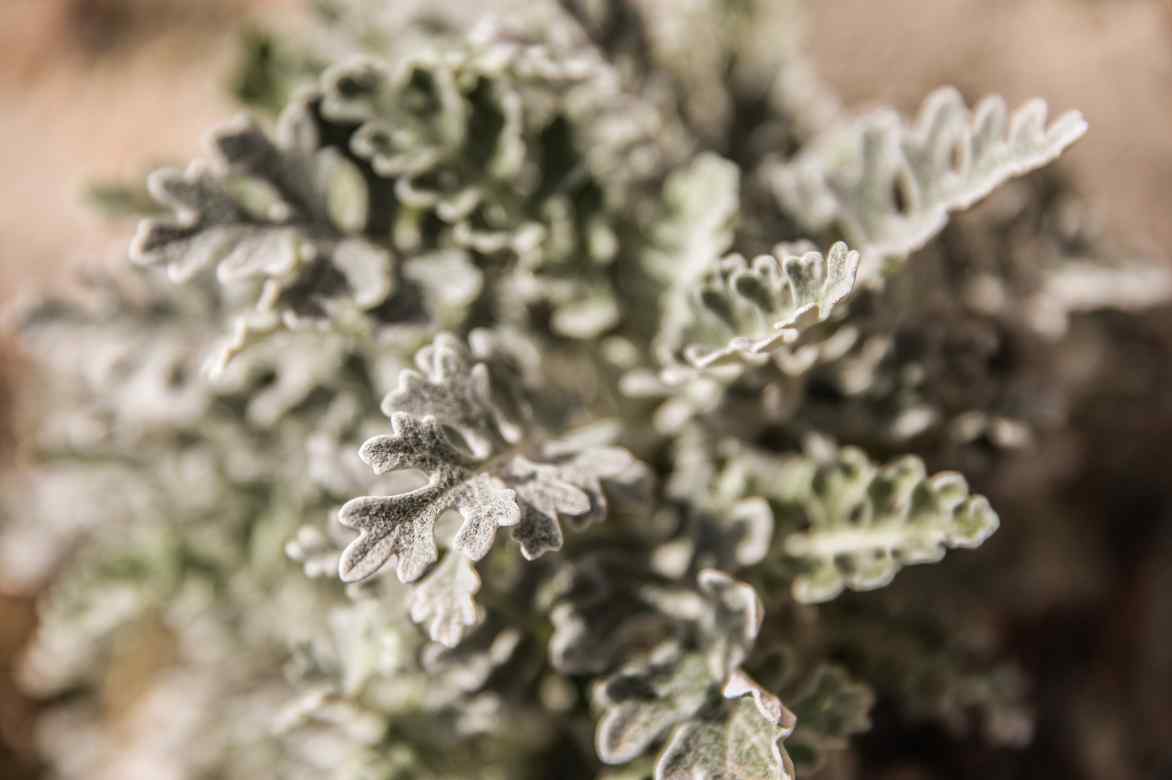
Dusty Miller
Description and Botany
Botanical data
- Latin name Senecio
- Family Asteraceae
- Common name Groundsel
- Flowering June to October
- Height 25 cm to 1.5 m
- Exposure Sun
- Soil type Light, dry, well-drained
- Hardiness varies by species
Evergreen shrub, perennial plants, or succulents from the vast Asteraceae family, which includes sunflowers, chrysanthemums, and daisies, the Senecio or groundsel comes in various forms.
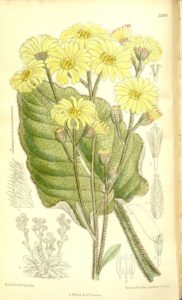
Senecio saxifragoides
The genus Senecio includes over 1,600 species, primarily native to the Southern Hemisphere, the Mediterranean region, and South Africa. They are typically found in rocky areas, sand, and among rocks, often near the sea. This is a Mediterranean plant perfectly adapted to drought, sea spray, and long hot summers, making it a must-have for coastal and Mediterranean gardens. It is prized for its ability to thrive in dry, saline soils. More or less hardy depending on the species, it is an excellent choice for coastal gardens.
The selection of Senecio is more extensive than it seems. The most common is the Senecio maritimus (Senecio candicans, Cineraria maritima, or Dusty Miller), an evergreen sub-shrub often grown as an annual, with its decorative, finely cut, fuzzy, and silvery foliage. It has given rise to many interesting varieties, such as ‘Angel Wings’ and ‘Donkey’s Ears’. The Senecio serpens (Blue Chalksticks), a popular succulent groundcover for Mediterranean rock gardens, Senecio mandraliscae, a shrubby and succulent species, and the Senecio greyi ‘Sunshine’ or Tree Groundsel, are also commonly cultivated. The Senecio rowleyanus, also known as “String of Pearls” or “Rosary Vine,” is a botanical curiosity with round leaves resembling tiny green pearls cascading down.
The genus is highly diverse. Three main categories of Senecio can be distinguished. The habit can be upright, climbing, or trailing. Some species are creeping groundcovers, not exceeding 25 cm in height, while others form highly branched shrubs reaching up to 1.50 m in height and over 2 m in width over time. For example, the Senecio cineraria forms a small, bushy shrub. Growth occurs at a steady, relatively fast pace.
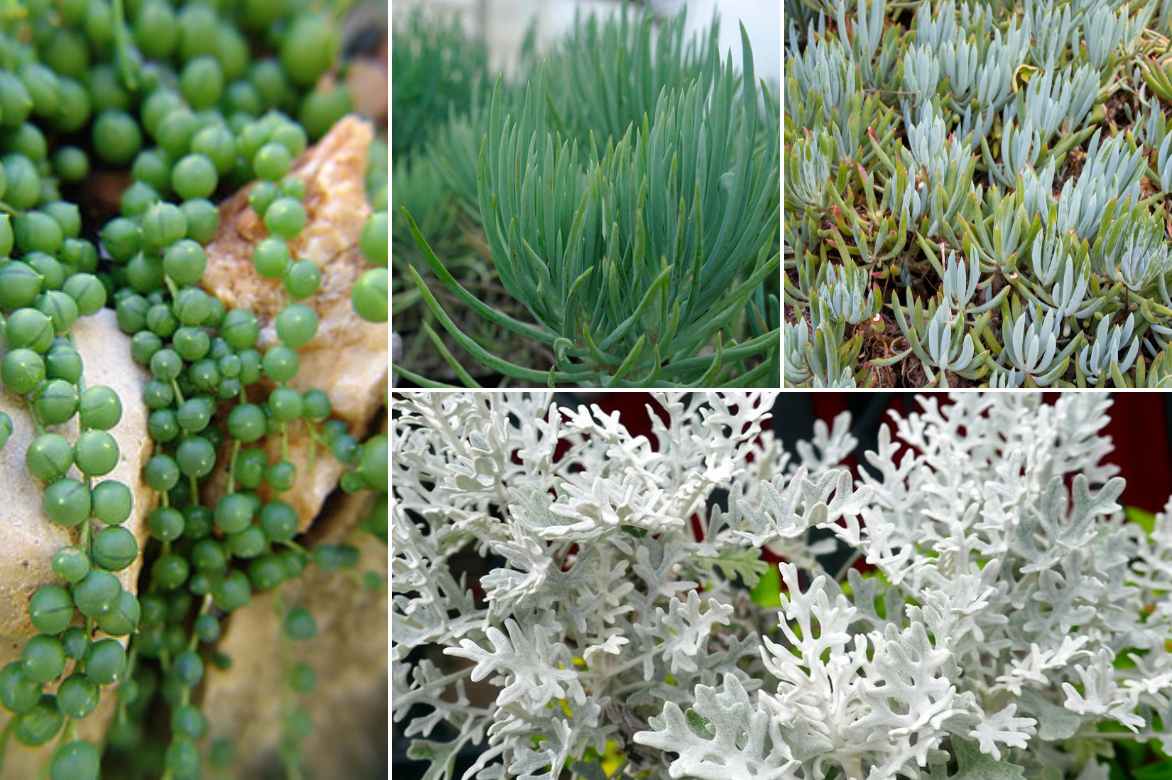
Senecio rowleyanus (© Jukka Heinonen), Senecio vitalis (© Megan Hansen), Senecio mandraliscae, and Senecio maritima ‘Silver Dust’.
The foliage, highly decorative, varies from one species to another. The leaves of Senecio also take on varied forms but are often fleshy and relatively thick. The leaves are felted and deeply lobed, somewhat resembling oak leaves, and silvery in colour, sometimes almost white in the Dusty Miller, forming a grey, woolly mane that earned the plant its name, “senex” meaning “old man” in Latin. This is the Senecio instantly recognisable, the one used by florists and often seen in cemeteries… The fleshy, blue leaves, covered in a white bloom and shaped like claws, of the Senecio mandraliscae evoke bluish fingers, while the Senecio serpens displays small, equally succulent leaves, more akin to rosemary. In these two “succulent” species, the leaves allow them to store water to withstand heat and drought. The bloom is another characteristic of their adaptation to dry conditions.
While the foliage is most often remarkable for its grey-white tones, some Senecio species exhibit bright green foliage, such as the Senecio polyodon, or grey-green in the case of the Senecio greyi ‘Sunshine’. The leaves are evergreen or semi-evergreen if the winter is mild.
Flowering occurs in summer, from June until frost, depending on the climate. Leafy, branched flower stems rise among the foliage, bearing small, more or less discreet heads, 1 to 3 cm in size, clustered in corymbs. The flowers are golden yellow to mustard yellow, creamy white, and exceptionally magenta pink in the Senecio polyodon. This colourful, daisy-like flowering contrasts beautifully with the leaf colour.
These small melliferous and nectariferous heads renew continuously throughout the summer, attracting numerous pollinating insects, particularly butterflies.
Once pollinated, the flowers turn into small achenes topped with a pappus of bristles, ready to self-seed easily, carried by the wind.
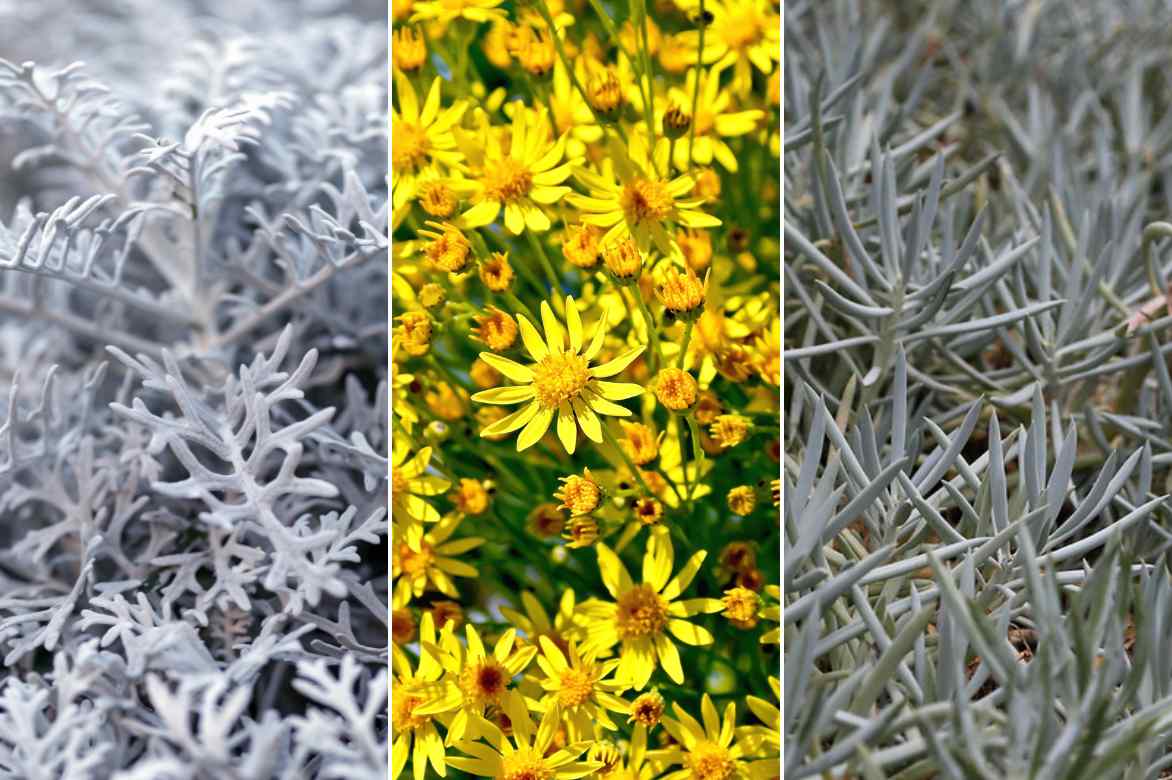
Senecio maritima, Senecio erucifolius, and Senecio serpens (© Jim, the Photographer)
Main species and varieties
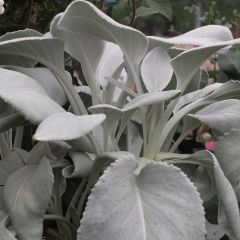
Senecio candidans Angel Wings
- Flowering time August, September
- Height at maturity 50 cm
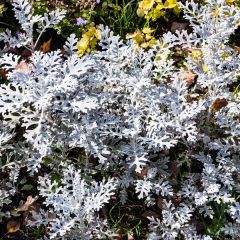
Senecio cineraria Silver Dust
- Flowering time August, September
- Height at maturity 25 cm

Senecio mandraliscae
- Flowering time September, October
- Height at maturity 1 m
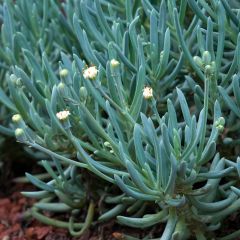
Senecio serpens Blue Chalk
- Flowering time September to November
- Height at maturity 40 cm
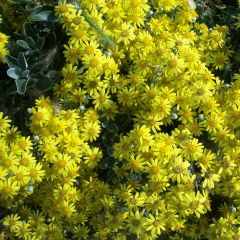
Senecio x greyi Sunshine
- Flowering time July to October
- Height at maturity 1,50 m
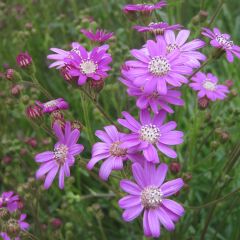
Senecio polyodon
- Flowering time June to August
- Height at maturity 40 cm
Discover other Senecio
View all →Available in 1 sizes
Available in 1 sizes
Available in 1 sizes
Available in 1 sizes
Available in 1 sizes
Available in 1 sizes
Available in 1 sizes
Available in 1 sizes
Available in 2 sizes
Available in 1 sizes
Planting and sowing Senecio
Where to Plant It?
The Senecio is a plant ideally suited to maritime climates and dry gardens. Some varieties, like Senecio greyi ‘Sunshine’, are relatively hardy if planted in well-draining soil that doesn’t retain water in winter and sheltered from cold, dry winds. Others, such as Senecio mandraliscae, are frost-sensitive and can only be grown in the ground in the orange tree zone. Very tender, Dusty Millers are often grown as annuals.
Senecio is one of those plants that thrive particularly well by the sea and in Mediterranean gardens, as most varieties generally cannot withstand temperatures below 5°C. This is why, in cold and humid regions, it is best grown in pots.
Naturally growing on arid slopes, often anchored in sand and among rocks, it loves full sun and adapts easily to any ordinary, well-drained soil, even stony ground. It is not afraid of summer drought but fears moisture, both in summer and winter: waterlogged soil will be fatal. If your soil is heavy, add gravel or coarse sand to improve drainage. It fits perfectly in a rock garden or scree garden. Heat, dry conditions, and full sun will enhance the colour of its foliage, as is typical for plants with grey, white, or silver leaves. It tolerates partial shade in warmer climates.
Versatile in mild climates, Senecio forms attractive, luminous clumps in beds, borders, large rockeries, and dry slopes, or as ground cover in the most challenging areas of the garden.
It is also useful for filling gaps in sunny beds. It can also be grown in pots on terraces or balconies, to be overwintered in the most humid regions.
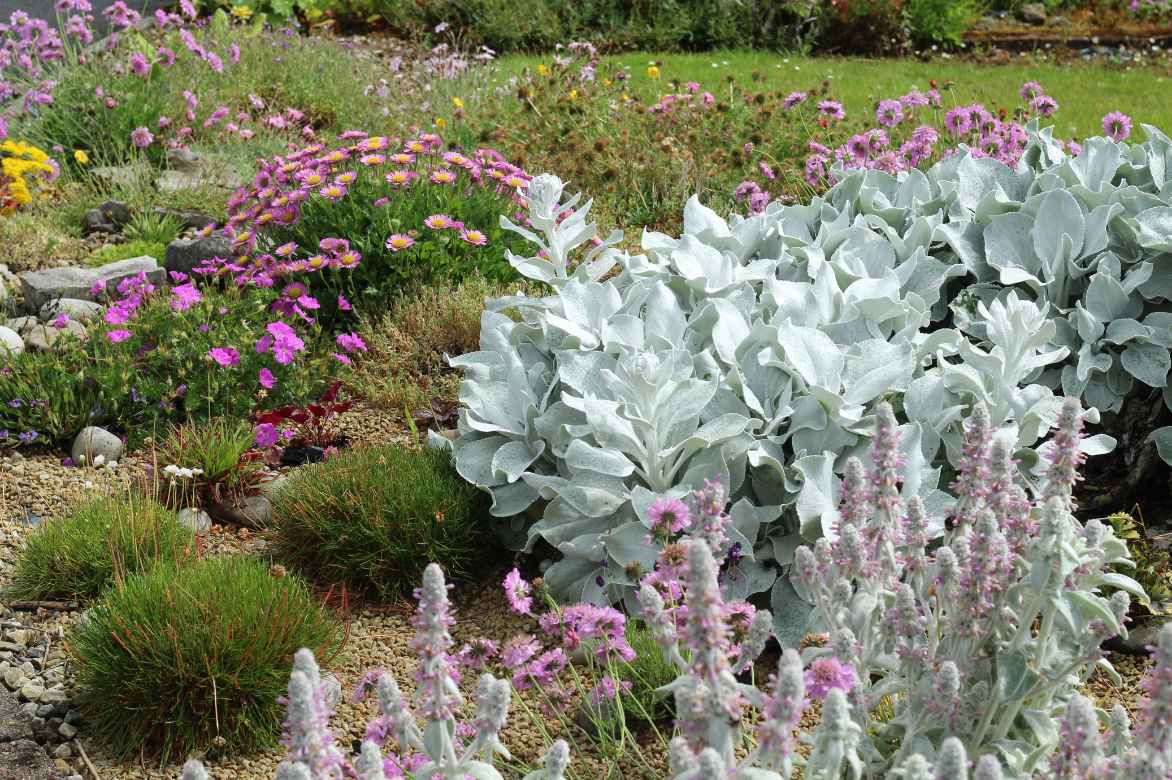
The silver-leaved Senecio thrives in dry or rock gardens
When and How to Plant or Sow It?
Senecio is planted in spring, from March to April after the frosts, or in autumn, from September to October, in warm climates. Sowing is done from February to March in seed trays.
How to Plant It?
In the Ground
In heavy soil, it is essential to incorporate drainage materials like gravel and compost at the bottom of the planting hole to isolate the stump from moisture and promote drainage. If your soil is too wet, plant it on a slope or in a raised rock garden.
- Dig a hole 2 to 3 times larger than the root ball
- Work the extracted soil well to loosen it and lighten it with coarse sand or gravel
- Spread a layer of pumice or clay pebbles at the bottom of the hole
- Plant the potted Senecio in the centre of the hole without burying the collar
- Fill in and lightly firm the soil
- Water
- We recommend covering the soil with a mineral mulch that retains heat
In Pots
The Senecio adapts very well to pot cultivation, provided it is given a very well-draining substrate to avoid stagnant moisture and root rot.
- Spread a good layer of drainage (gravel, pumice, or clay pebbles) 5 to 10 cm deep at the bottom of the container
- Plant in a draining mix composed of 2/3 Mediterranean plant compost and 1/3 sand
- Water
How to Sow Senecio?
- Fill a seed tray with good sowing compost
- Sow your Senecio seeds broadcast on the surface
- Cover the seeds with a thin layer of compost
- Firm lightly and water generously with a fine spray
- Place the tray in bright light, without direct sunlight, at a temperature of 18°C to 24°C
- Keep moist but avoid waterlogging the substrate until germination, which takes between 10 and 21 days
- When the seedlings have two or three leaves, transplant them into 8 cm pots
- Transplant outdoors, in the garden or in pots, once all risk of frost has passed, usually by late May or early June the following year
How to care for a Senecio?
The Senecio can remain in the ground all year round in Mediterranean regions and only during the warmer season elsewhere. It is an undemanding plant, truly low-maintenance as long as the soil remains well-drained. Once established, it is rarely affected by diseases, as it only fears excess moisture. Water once a week during the first summer after planting: a few generous but spaced-out waterings in summer, in dry and hot climates, will stimulate its growth. Once well-rooted, it can easily withstand several weeks without watering. Always allow the soil to dry out between waterings.
In pots, water once a week in summer. Never leave a saucer under the pots, especially in winter.
When winter arrives, protect the stump with straw or dead leaves.
In regions north of the Loire, bring your pots indoors before the first frosts to a sheltered spot like an unheated greenhouse or a frost-free conservatory. Keep the substrate almost dry during winter by watering only once a month.
How to prune a Senecio?
Regular pruning in March-April or after flowering will prevent it from forming old wood and becoming bare at the base. Remove faded flower heads by cutting them at their base with pruning shears. Prune annually by lightly cutting back the clumps to 20 cm from the ground to keep them longer, maintain a dense and bushy habit, and ensure beautiful foliage.
Multiplication
The Dusty Miller propagates easily from seed. Propagation by cuttings in summer is another easy method to multiply all senecio plants. Additionally, some species naturally tend to develop roots as soon as a stem touches the soil. Propagation can be done by leaf or stem cuttings.
Leaf Cuttings
- Take a few leaves
- Simply place them on a mixture of compost and sand without burying them
- Transplant into pots or directly into the soil once they are sufficiently rooted
Stem Cuttings
- In summer, take stems 8-10 cm long, making a clean cut just below a node
- Remove the leaves at the base
- Let them dry for a day or two
- Insert the cuttings into a tray or buckets filled with a well-draining mixture of river sand and compost
- Gently firm the soil around the stems
- Keep the substrate moist until rooting occurs
- Place these young cuttings outdoors in partial shade
- Then, in October, protect your young plants from frost under a cold frame
- Plant them out the following spring
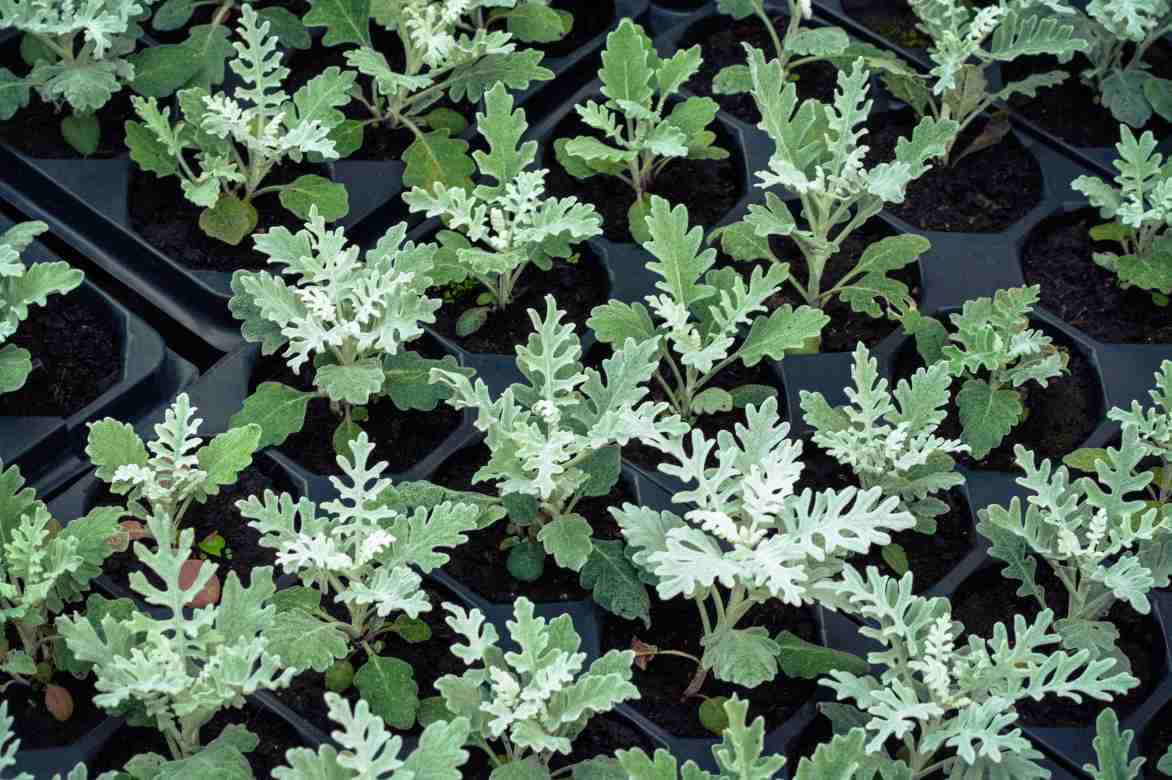
Associate
The Senecio can easily be incorporated into a dry garden, a scree garden, or a rockery alongside other drought-resistant perennials and Mediterranean perennials that share the same requirements: dry, well-drained soil and a sunny exposure. If you live by the sea, it’s the ideal plant for borders or beds with sandy soil. With their beautiful silvery foliage, Dusty Millers soften compositions in beds or create striking contrasts with complementary colours like the yellow of Coreopsis, for example. To create a symphony of grey foliage, pair them with an Artemisia or an Helichrysum italicum. In pots and planters, they will contrast beautifully with the colourful foliage of Coleus and miniature purple Dahlias or a Salvia ‘Mirage Burgundy’.
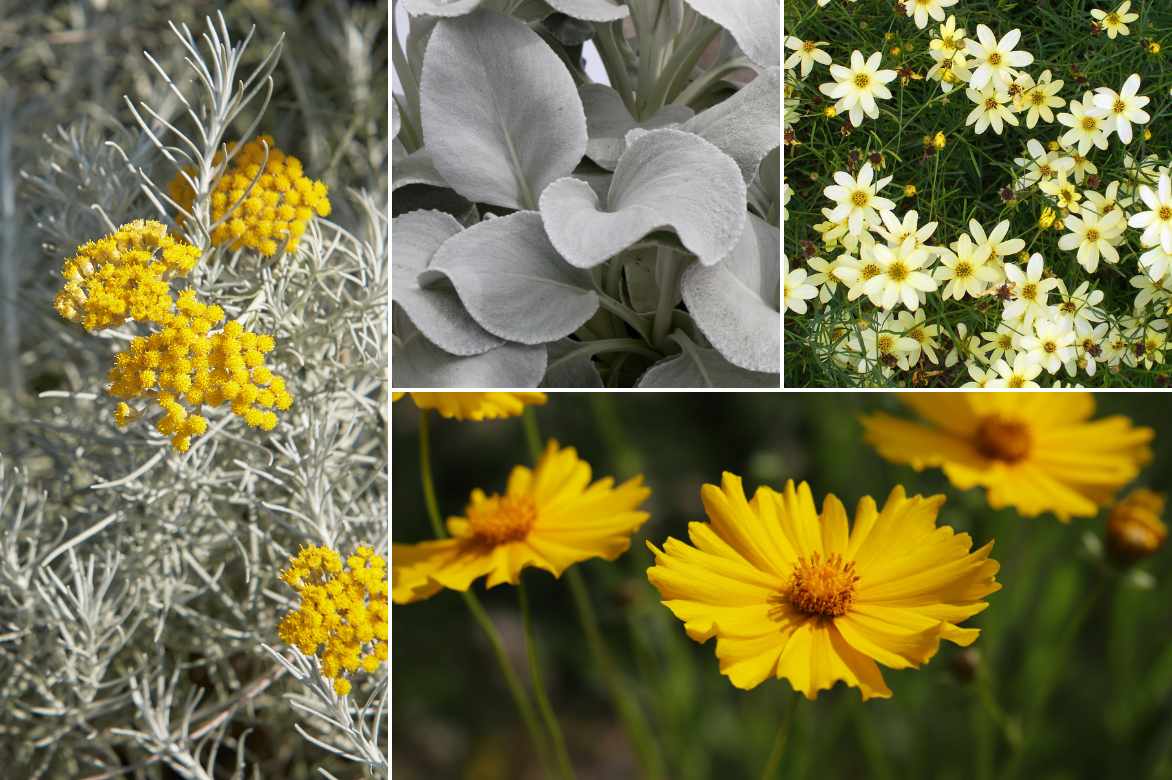
Helichrysum italicum, Senecio candicans, Coreopsis verticillata ‘Moonbeam’, and C. auriculata in a harmony of yellow and grey
On a dry slope or in large, arid rockeries, plant Senecio mandraliscae with Delosperma and other ground-cover and undemanding perennials like Sedums, Mouse Ears, and Dianthus.
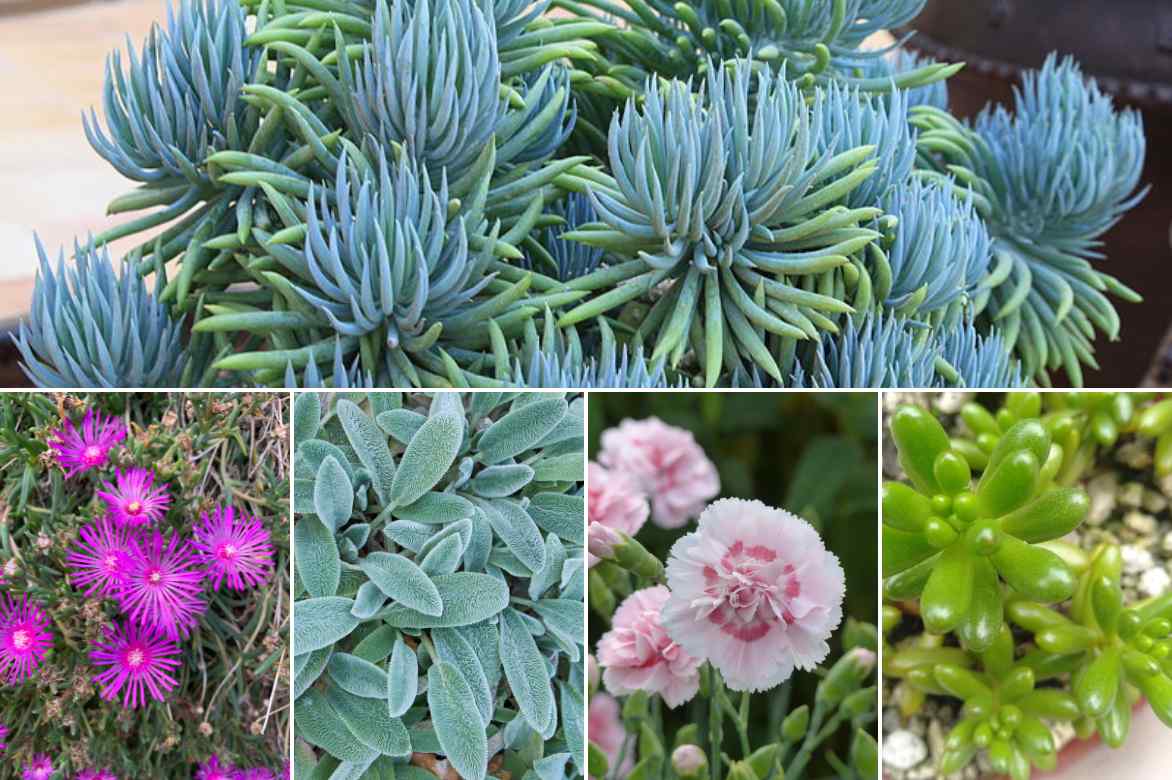
Senecio mandraliscae, Delosperma, Stachys byzantina, Dianthus, and Sedum rubrotinctum
In a dry, Mediterranean-style garden with a mineral theme, plant Senecio, for example, at the front of a bed composed of dwarf palms (Chamaerops humilis), American agaves, Opuntia, cacti, and other succulents, or with plants from the garrigue such as rosemary or rockroses.
At the edge of a mineral-themed bed, it will add a touch of greyish or bluish colour, nestled among grasses like Stipa pennata, Stipa tenuifolia, and Carex.
In naturalistic sunny gardens, it pairs easily with lavenders, some yarrows, and Perovskia.
Useful resources
- Discover our drought-resistant perennials, perfect for a no-water garden!
- What to plant in stony soil?
- Which plants for a natural sunny garden?
- Subscribe!
- Contents


































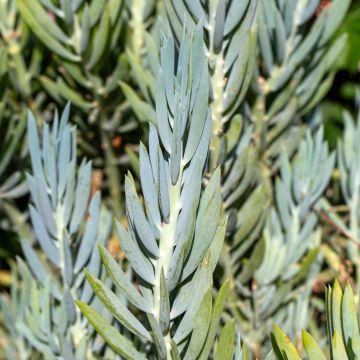
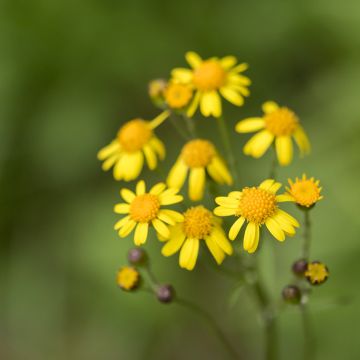


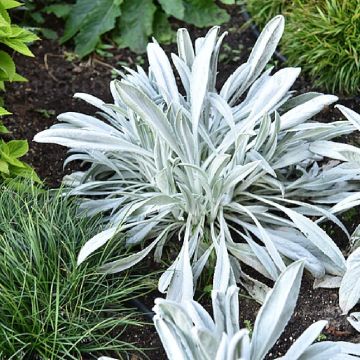


Comments